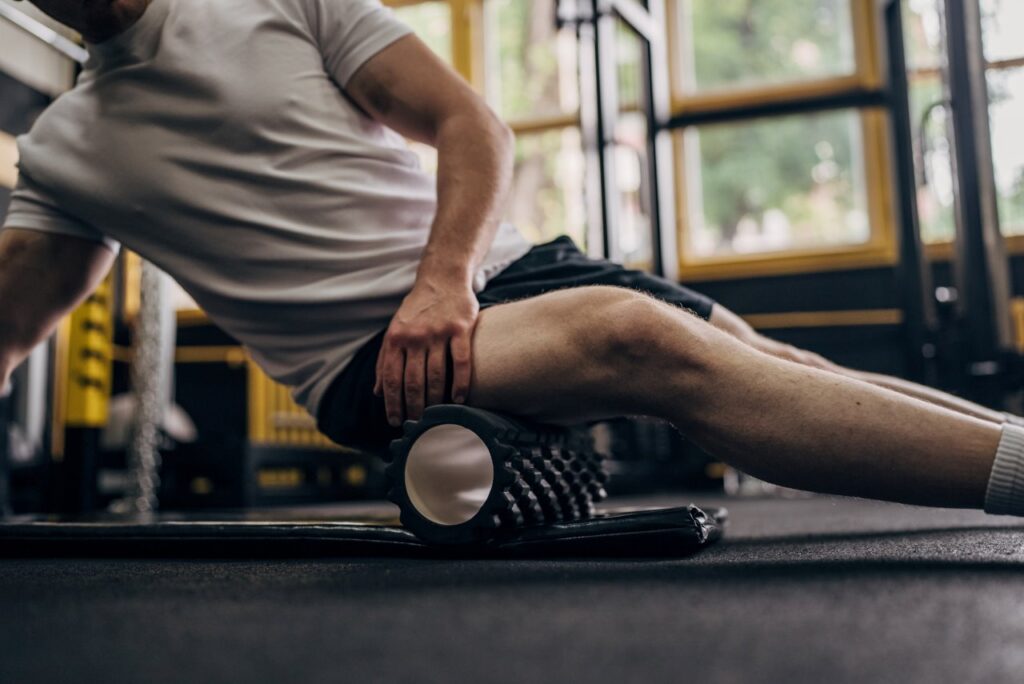Wednesday, February 28th, 2024
When you embark on a journey to enhance your fitness – whether you’re a seasoned athlete or taking the first steps to start your fitness journey – encountering muscle soreness after a rigorous workout session is a common – if frustrating – phenomenon. This type of soreness, known as Delayed Onset Muscle Soreness (DOMS), can leave you feeling the effects of your workout well after you’ve left the gym. But what exactly is DOMS, and why does it happen? Let’s take a closer look.
Causes of Delayed Onset Muscle Soreness
Microscopic Muscle Damage
The primary culprit behind DOMS is the microscopic damage that occurs in your muscle fibers during exercise, especially when you engage in activities that your body isn’t accustomed to; this damage is a natural part of the muscle strengthening process, leading to muscle growth and enhanced endurance over time. So if you just happened to start your fitness journey recently, it’s not abnormal to experience DOMS.
Inflammation Response
Following the microscopic tears in the muscle fibers, the body initiates an inflammatory response to start the healing process; this response is crucial for muscle repair but also contributes to the soreness and stiffness experienced as DOMS.
Lactic Acid Myth
Contrary to popular belief, lactic acid is not responsible for DOMS. While it does accumulate in the muscles during intense exercise, leading to a burning sensation, it is quickly cleared from the system, and its levels return to normal within an hour of exercise, long before DOMS sets in.
Symptoms and Characteristics of DOMS
Muscle Stiffness and Tenderness
If you’re experiencing a deep, achy soreness in your muscles 24 to 72 hours after a workout, you’re likely dealing with DOMS; soreness can also be accompanied by muscle stiffness and tenderness to the touch.
Reduced Range of Motion
DOMS can also lead to a temporary reduction in the range of motion due to muscle stiffness, making it challenging to move as freely as you normally would – at least without pain or discomfort.
Gradual Resolution
Typically, the discomfort and symptoms of DOMS gradually subside and completely resolve within a week, as your muscles heal and adapt to the new level of activity.
Effective Ways to Manage DOMS
Gradual Progression in Exercise
One of the most effective strategies to manage DOMS is to gradually increase the intensity and duration of your workouts – this approach allows your muscles to adapt over time, reducing the likelihood and severity of soreness.
Warm-Up and Cool Down
Incorporating a thorough warm-up before and a cool-down after your exercise routine can significantly reduce the risk of DOMS by preparing your muscles for the workout and aiding in the recovery process afterward.
Adequate Hydration and Nutrition
It’s a cliché, but staying hydrated and consuming a balanced diet rich in nutrients can also help expedite the muscle recovery process, alleviating your symptoms of DOMS more rapidly.
Massage and Foam Rolling

If you can, engaging in massage therapy – or using a foam roller at home – can enhance blood flow to the affected muscles, promoting faster healing and reducing soreness.
Active Recovery
Light exercise – such as walking or gentle stretching – can also serve as an effective method for alleviating DOMS by increasing blood circulation to the muscles without overexerting them.
Pain Relief Measures
While it’s important to listen to your body and not push through severe pain, over-the-counter pain relievers and anti-inflammatory medications can be used cautiously to manage discomfort associated with DOMS, especially if it interferes with your day-to-day life.
Prevention Strategies for DOMS
Consistent Exercise Routine
Maintaining a consistent exercise routine helps your muscles adapt more efficiently, making them less susceptible to severe DOMS over time.
Proper Posture and Form
Ensuring you’re exercising with proper posture and form can prevent unnecessary strain on your muscles, reducing the risk of DOMS – this is especially true if you live a generally sedentary lifestyle, or sit at an office desk all day long.
Listening to the Body
Paying close attention to your body’s signals and giving yourself adequate rest between intense workouts is crucial for preventing overtraining and reducing the incidence of DOMS. Not only do your muscles need time to repair, but you could actually even end up hampering the results of all your hard work if you overwork yourself; without adequate downtime, your muscle fibers won’t be able to break down and grow larger.
The Bottom Line
Overall, Delayed Onset Muscle Soreness is a natural part of the fitness journey, signaling that your muscles are adapting and growing stronger – and 9 times out of 10, it’s absolutely nothing to worry about. By understanding what DOMS is and implementing strategies to manage and prevent it, you can continue to make progress in your fitness goals without unnecessary discomfort. And remember, embracing the positive effects of regular exercise is essential for your overall health and well-being, so don’t let DOMS deter you; instead, see it as a sign of your dedication and progress, and keep going!

